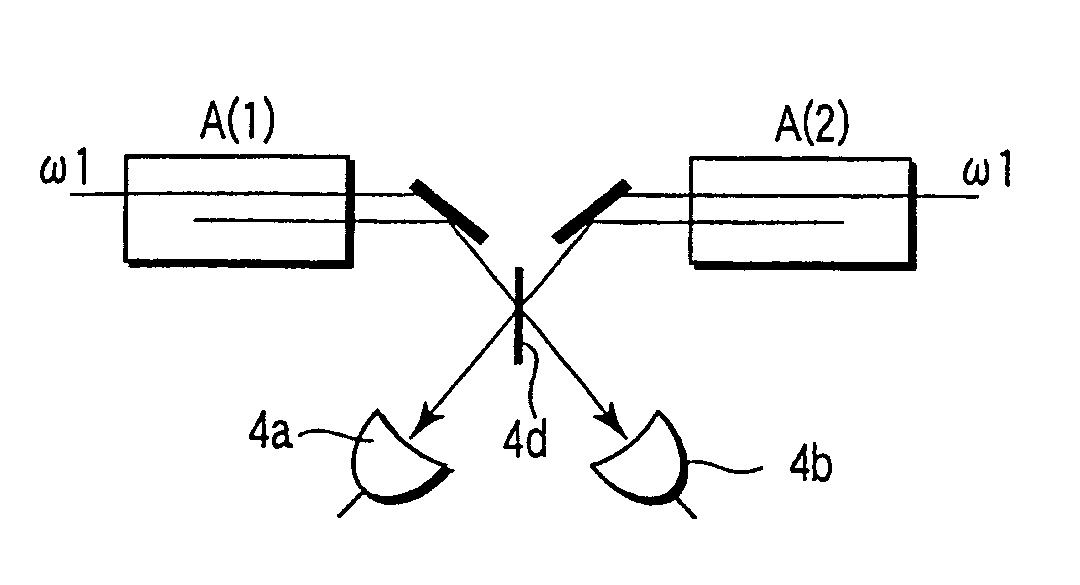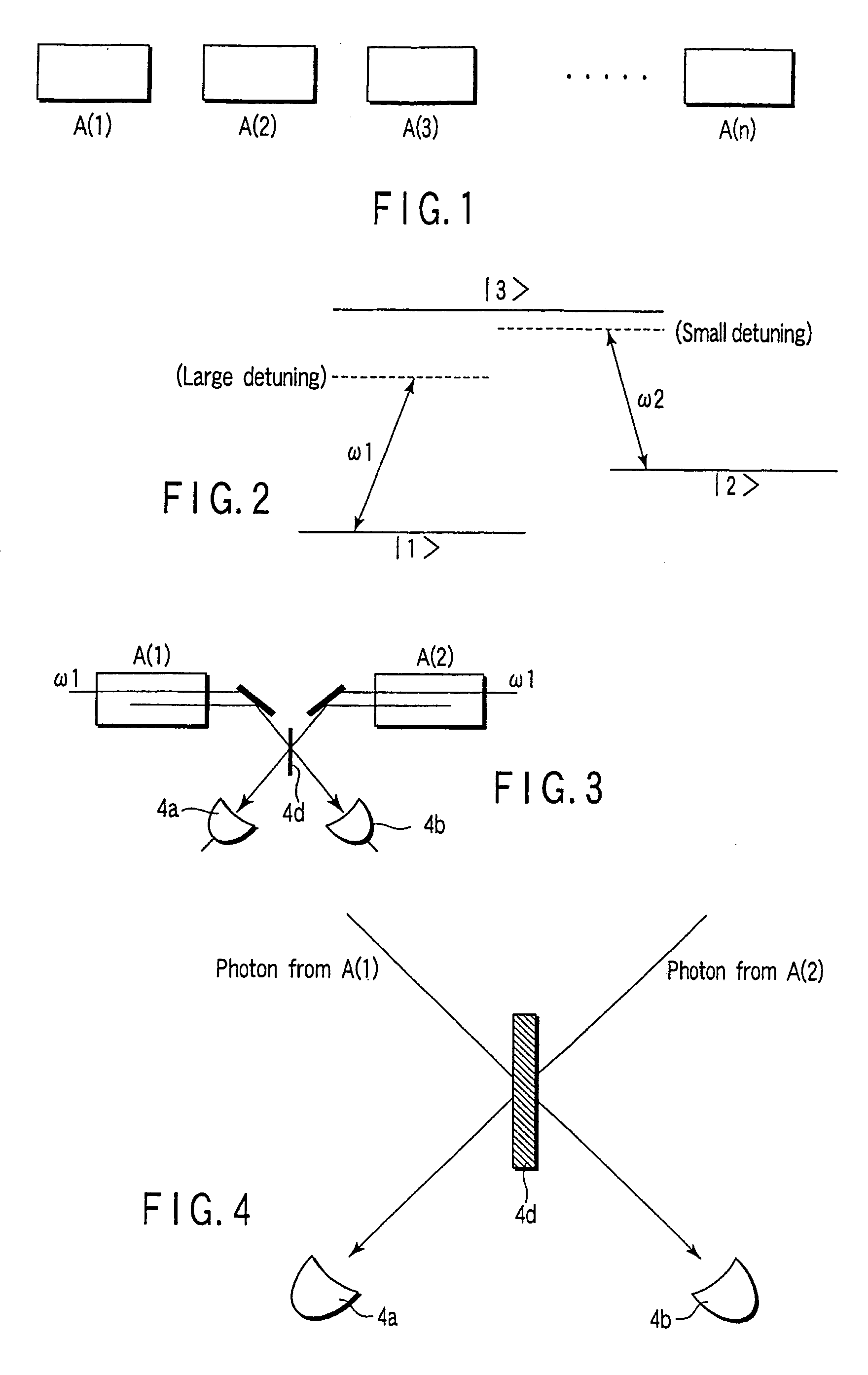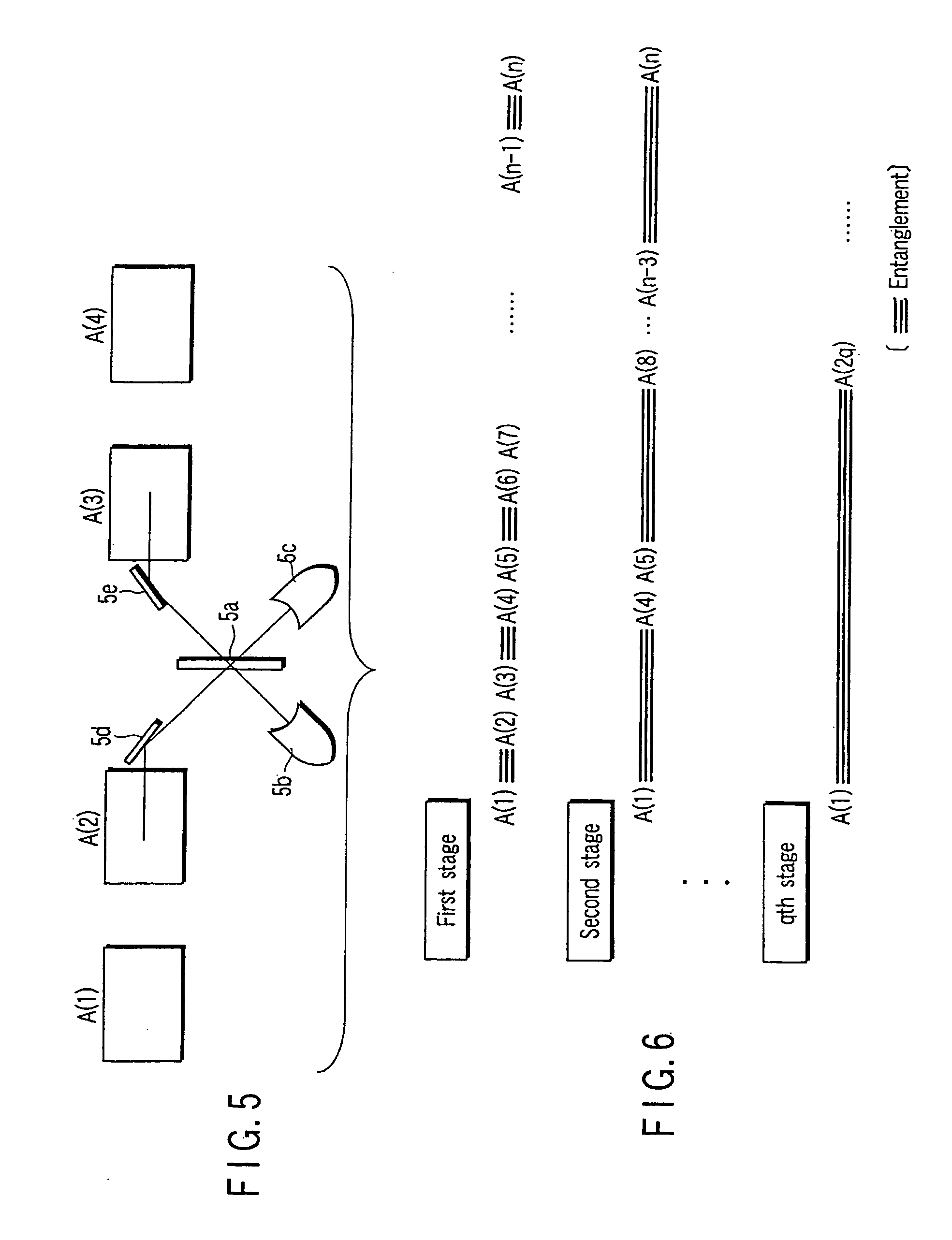Quantum communication apparatus and quantum communication method
a communication apparatus and quantum communication technology, applied in the field of quantum communication apparatus and quantum communication method, can solve the problems of inability to efficiently generate entanglement between distant sites, inability to amplify or relay state during transmission, and inability to duplicate state, etc., to achieve quick and efficient entanglement connection
- Summary
- Abstract
- Description
- Claims
- Application Information
AI Technical Summary
Benefits of technology
Problems solved by technology
Method used
Image
Examples
example 1
[0119]First, four 2 mm×2 mm×2 mm Y2SiO5 crystals dispersed with Pr3+ ions by 0.02% are prepared. The crystals are kept at a temperature of 1.4 K in cryostats 1 to 4 having optical windows.
[0120]Two ring dye laser sources are also prepared. One is a laser source whose frequency is stabilized to an angular frequency ω2 near 605.98 nm (16502.3 cm−1). The other is a laser source whose frequency is so stabilized as to emit light with angular frequency ω1=ω2−9.4×1013 rad / s lower than that of light emitted from the above laser source by 9.4×1013 rad / s (about 500 cm−1). The light from the former ring dye laser source resonates with a transition between 3H4(1), the lowest Stark level of Pr3+ in the crystal, and 1D2(1), an electronically excited state.
[0121]In Example 1, the apparatus shown in FIG. 9 is used. The crystals 5 to 8 as atomic ensembles A(1)-A(4) are irradiated with the respective laser beams and a generated photon is detected, thereby generating entanglement.
[0122]As shown in FIG...
example 2
[0153]In Example 1, the optical paths extending from the half mirror 501 to the acousto-optical devices 302 to 305 arranged for light applied to the crystals 5 to 8 and the optical paths extending from the electro-optical device 404 to the acousto-optical devices 303 and 304 are formed of a free space in which light is propagated according to mirrors that determine the direction of light. In contrast to this, in Example 2, light is made to propagate in optical fibers, and entanglement is generated between Pr3+ ion ensembles of crystals 5 and 8 as in Example 1.
[0154]The light transmitted through or reflected by the half mirror 501 is converged by the lens 2601 (see FIG. 11 hereinafter) and is incident on the optical fiber 2701 so as to propagate therein. The light transmitted through the electro-optical device 404 is converged by the lens 2602 and is incident on the optical fiber 2702 so as to propagate therein. The functions of the beam splitters or half mirrors in Example 1 are rep...
example 3
[0156]In Example 1, acousto-optical devices are used for the optical shutters 302 to 305. In contrast to this, in Example 3, the optical shutters 302 to 305 are replaced with shutters using electro-optical devices. As a consequence, the operation speed of the overall entanglement generation system can be improved, and the time necessary for entanglement connection can be shortened as compared with Example 1. The time necessary for entanglement generation except for an initialization process for crystals, in particular, can be shortened to 1 / 10. That is, the construction in this Example 3 is effective for entanglement generation between distant sites based on multistage entanglement connection.
PUM
 Login to View More
Login to View More Abstract
Description
Claims
Application Information
 Login to View More
Login to View More - R&D
- Intellectual Property
- Life Sciences
- Materials
- Tech Scout
- Unparalleled Data Quality
- Higher Quality Content
- 60% Fewer Hallucinations
Browse by: Latest US Patents, China's latest patents, Technical Efficacy Thesaurus, Application Domain, Technology Topic, Popular Technical Reports.
© 2025 PatSnap. All rights reserved.Legal|Privacy policy|Modern Slavery Act Transparency Statement|Sitemap|About US| Contact US: help@patsnap.com



